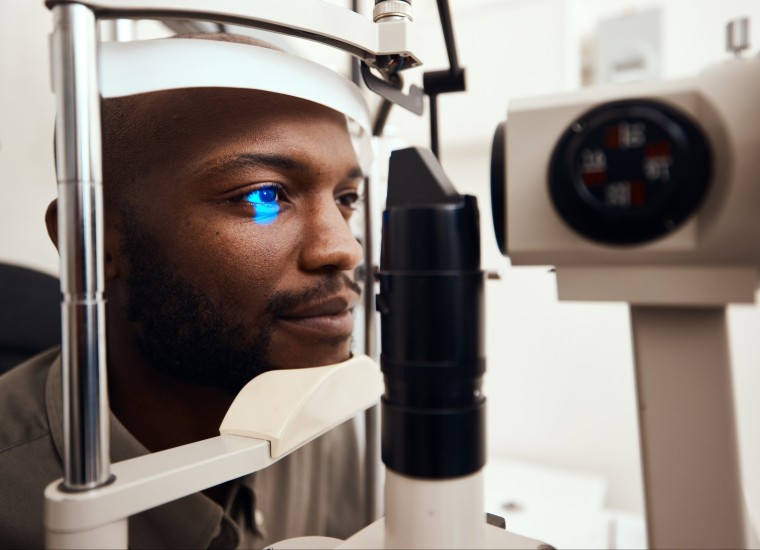All Categories
Featured
Table of Contents

Routine eye exams are important for maintaining great vision and discovering potential eye wellness concerns early. Nevertheless, the regularity of these examinations can vary considerably based on an individual's age, way of living, and general health. Recognizing the recommended timetable for eye exams can help make certain that individuals of every ages get suitable treatment and surveillance for their eye health.
Infants and Toddlers (0-2 Years)
For toddlers and infants, eye examinations are crucial for finding any type of prospective vision problems at an early stage. The American Academy of Ophthalmology advises that a youngster's very first eye examination should occur at around six months old. During this preliminary browse through, the eye care professional will certainly examine the youngster's aesthetic growth and look for any type of apparent eye concerns.Following this very first test, it is advised that children have one more eye test at age 3. This browse through will certainly focus on evaluating the kid's general visual feature, including eye positioning and the capability to track things. If no problems are identified, the next test ought to be arranged prior to the child begins institution, commonly around age five or six.
School-Aged Youngsters (6-18 Years)
Normal eye tests must be arranged every one to two years when youngsters get to school age. Vision is crucial for discovering and development, and lots of institutions conduct vision testings. These screenings do not replace a thorough eye test by an eye treatment specialist.For children associated with activities or sporting activities requiring considerable visual focus, yearly eye tests may be advisable. In addition, if a child exhibits indications of vision problems-- such as problem checking out, squinting, or constant frustrations-- a see to the eye physician need to be set up as soon as possible.
Youthful Adults (19-39 Years)
Young person normally have fewer vision modifications than older age, however normal eye examinations remain necessary. The general suggestion is to arrange an eye examination every 2 years during this duration. Nevertheless, individuals with certain risk factors-- such as a family members background of eye illness, diabetic issues, or those who use contact lenses-- must take into consideration yearly eye tests.In addition, those that invest substantial time on digital devices may experience electronic eye stress. If signs and symptoms such as dry skin, tiredness, or blurred vision happen, it may be a good idea to see an eye treatment professional faster.
Adults (40-64 Years)
Grownups aged 40 to 64 ought to arrange eye tests every one to 2 years. Eye tests can also aid identify various other common age-related conditions such as glaucoma, cataracts, and macular degeneration.If people in this age have danger variables such as high blood pressure or diabetes, they might require even more frequent evaluations to check their eye wellness closely.
Elders (65 Years and Older)
For seniors, normal eye exams end up being much more important. The American Optometric Association recommends that people aged 65 and older have an eye examination at the very least yearly. Older grownups are at a higher threat for numerous eye conditions, consisting of cataracts, glaucoma, and age-related macular deterioration. Early detection and therapy of these problems can avoid vision loss and enhance the high quality of life.Final thought.
Understanding the ideal routine for eye tests based on age is important for preserving optimal eye health and wellness throughout life. From infants to seniors, regular eye examinations play an essential duty in identifying concerns early and making certain that vision continues to be sharp. By adhering to these standards and speaking with an eye treatment expert, individuals can take proactive actions towards maintaining their vision and overall health and wellness. Whether it's a child's initial visit or a senior's annual check-up, prioritizing eye treatment is an investment in long-lasting well-being.Table of Contents
Latest Posts
A Historic Shoreline Destination with Modern Delights
Published Apr 12, 25
1 min read
Host Your Perfect Event: Venue Rental Options for every single Celebration
Published Mar 27, 25
1 min read
Experience High-end at Canyon Crest-- Book Your Event Today!
Published Feb 21, 25
3 min read
More
Latest Posts
A Historic Shoreline Destination with Modern Delights
Published Apr 12, 25
1 min read
Host Your Perfect Event: Venue Rental Options for every single Celebration
Published Mar 27, 25
1 min read
Experience High-end at Canyon Crest-- Book Your Event Today!
Published Feb 21, 25
3 min read